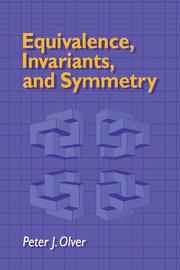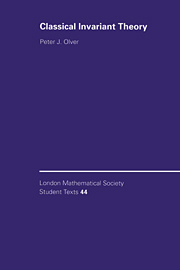Abstract
This chapter presents the equivariant method of moving frames for finite-dimensional Lie group actions, surveying a variety of applications, including geometry, differential equations, computer vision, numerical analysis, the calculus of variations, and invariant flows.
Introduction
According to Akivis [1], the method of moving frames originates in work of the Estonian mathematician Martin Bartels (1769–1836), a teacher of both Gauss and Lobachevsky. The field is most closely associated with Élie Cartan [22], who forged earlier contributions by Darboux, Frenet, Serret, and Cotton into a powerful tool for analyzing the geometric properties of submanifolds and their invariants under the action of transformation groups. In the 1970s, several researchers, cf. [25, 37, 38, 49], began the process of developing a firm theoretical foundation for the method. The final crucial step [32], is to define a moving frame simply as an equivariant map from the manifold back to the transformation group. All classical moving frames can be reinterpreted in this manner. Moreover, the equivariant approach is completely algorithmic, and applies to very general group actions.
Cartan's normalization construction of a moving frame can be interpreted as the choice of a cross-section to the group orbits. This enables one to algorithmically construct an equivariant moving frame along with a complete systems of invariants through the induced invariantization process. The existence of an equivariant moving frame requires freeness of the underlying group action, i.e., the isotropy subgroup of any single point is trivial.

